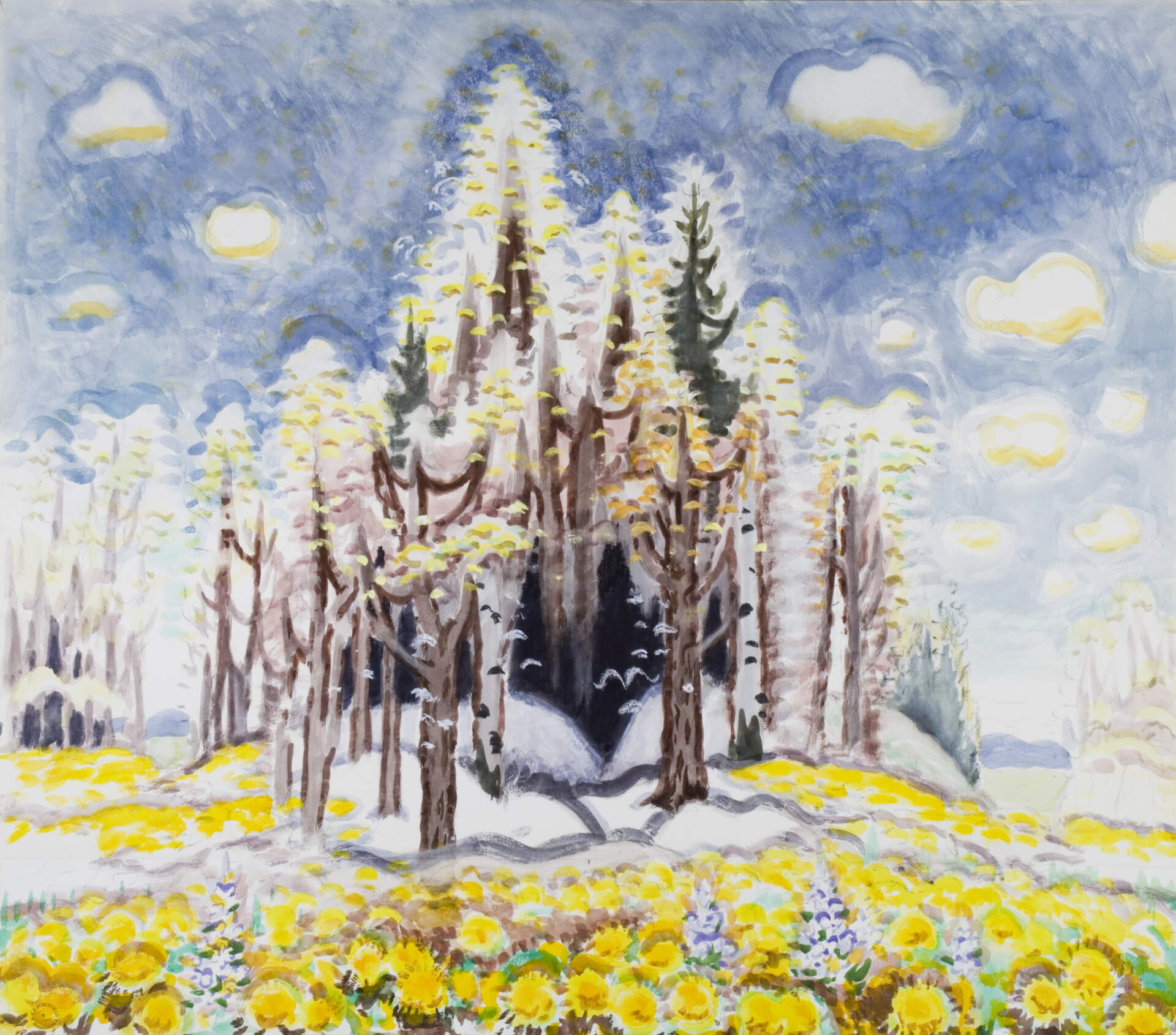
Charles E. Burchfield (1893-1967), Early Spring, 1966-67; watercolor and charcoal on paper, 37 1/8 x 42 1/4 inches, Burchfield Penney Art Center, Gift of Charles Rand Penney, 1994
Suddenly I Awoke: The Dream Journals of Charles E. Burchfield
Past
Apr 13, 2018 - Jul 29, 2018
Charles Burchfield wrote in his essay, "50 Years as a Painter," that he thought of the year 1915 as the true beginning of his art career[i]. Around the same time in Switzerland, Carl Gustav Jung (1875-1961) began to compile what would later be known as TheRed Book.
In 1911, after graduating from high school, Burchfield, having already received a scholarship for college, had to delay his entry into art school because of a bout of typhoid fever. It was during this time that he began to read the work of American Naturalist writers John Burroughs (1873-1921) and Henry David Thoreau (1817-1862). Their descriptive and thoughtful prose had a great effect on him and the way that he wrote about nature.
Starting in 1912 Carl Jung had a series of disturbing dreams that led to what he described as a “confrontation with the unconscious.[ii]” Visions of death and destruction, and rivers of blood led to a feeling of disorientation and concerns about a “psychic disturbance” within himself. In order to process the visions he consciously submitted himself to the impulses of his unconscious, which led him to an analysis of his childhood memories. During the summer of 1917, Burchfield was chiefly concerned with recording “childhood impressions.” He wrote in a manuscript later in life that “The summer of 1917 was (in retrospect) a long dream-like one, much of the time was given over to the re-creation of childhood memories and moods.”
Throughout his career Burchfield recorded more than a hundred dreams in his journals. He also created thousands of doodles which he called “a form of subconscious thinking in visual terms.” He went on to say that some of his most useful abstract motifs came from the practice. Carl Jung, while serving in the military during World War I in 1917, drew a series of twenty-seven mandalas in pencil in his army notebook. These drawings would later inspire the paintings that fill The Red Book, known to him as Liber Novus.
The exhibition Suddenly I Awoke: The Dream Journals of Charles E. Burchfield was developed through a collaboration between the Burchfield Penney Art Center and the C.G. Jung Center in Buffalo New York. The exhibition will include drawings and paintings by Burchfield, paired with transcriptions of dreams from his journals. The exhibition will also present material that suggests an affinity between these two early twentieth-century visionaries, whose appreciation for nature was both a formative and driving force.